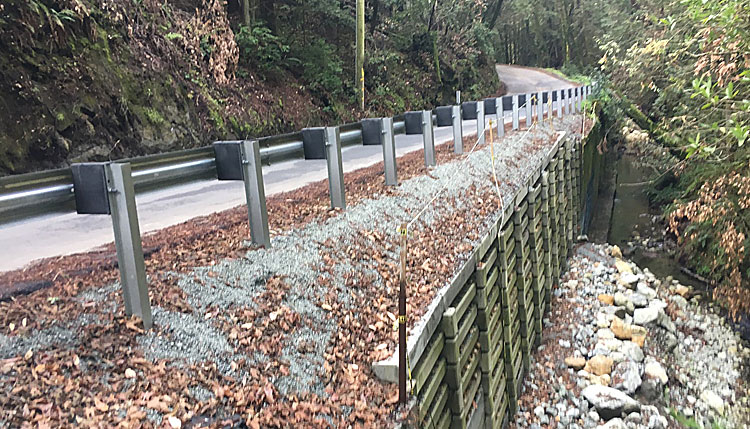By Zach Friend

What Does Measure D Fund?
The aim of the tax measure was to include a balanced mix of projects. Projects would be geographically dispersed and focus on everything from road and highway improvements to bus, pedestrian, bike and school safety investments. It included mobility access funding (for senior and disabled transit service), coastal rail/trail funding and rail line maintenance and economic and environmental analysis of the line.
Neighborhood Projects
Highways
Large ticket items, such as the highway, need multiple years of sales tax collection to have enough funds for construction and, while it doesn’t seem fast enough, the next phase of highway widening (after environmental, design and pre-construction work is completed) is slated for 2020/2021.
Local Streets
However, enough funding is collected from the tax to allow for road (local streets) work to be completed annually in each district. The total amount for our district each year from Measure D (for local road repair) is approximately $800,000. This allowed for the first set of streets to be completed in La Selva about a month ago with road projects planned in Rio Del Mar and Seacliff, Pleasant Valley and Corralitos (as well as in the Green Valley Road corridor) within the initial 5 year plan.
How were the streets selected for repair?
Roads were chosen through a set of criteria that took into consideration a road’s condition, it’s location and then what is possible with the funding amount. This funding is primarily focused on neighborhood roads (as opposed to arterial roads such as Soquel) since those roads haven’t received any funding in quite some time.
Second, every road has a Pavement Condition Index (PCI) score. As I’ve written in previous columns, the PCI for many of our County’s maintained roads are average, below average or poor. Roads with a failing PCI are much more expensive to repair (since they require a rebuild) than roads with a higher PCI. As a result, you can fix a lot more roads that are actually in average to good condition than you could roads in poor or failing condition – preserving those roads from falling into poor or failing condition. Very roughly speaking you can repair about 4 times the amount of distance in average to good condition roads than you could in failing roads with the same amount of money.
With nearly 200 square miles of roads in our district and significant deferred maintenance, clearly $800,000/year won’t be able to fix them all. But one of our main goals is to do as many roads as possible since most haven’t been fully repaired in decades.
Three Selection Elements
The first step to was review the PCI to determine which roads we could preserve and how many we could rebuild with the amount of funds we had. From there, we look at Adjacency when possible – meaning, once equipment is mobilized it’s cheaper to do the cross street (even if we wouldn’t normally have done it based on PCI) than it would be if we did it on its own.
All of this was combined with input we’ve received (and Public Works has received) historically about roadwork that’s needed and also roads that are within our Capital Improvement Program for long term investments. These three elements led to the selection of roads that were completed.
I know that much more needs to be done. In many areas we have decades of deferred maintenance on our local roads and each year it becomes more expensive to repair roads that fall into greater disrepair (making the $800k/year fix less than it would otherwise). Measure D alone won’t fix all of these roads in our district but it did provide a much-needed infusion as well as the possibility of leveraging state funding.
Over time (If SB 1 isn’t repealed in November through Proposition 6) there will be funds available for these repairs that haven’t been there historically. I’ve heard from many of you that road repair is a priority and your support of Measure D was essential in beginning to address this issue.
•••
As always, I appreciate hearing your thoughts. Please feel free to call me at 454-2200 or visit me in my weekly open office hours.